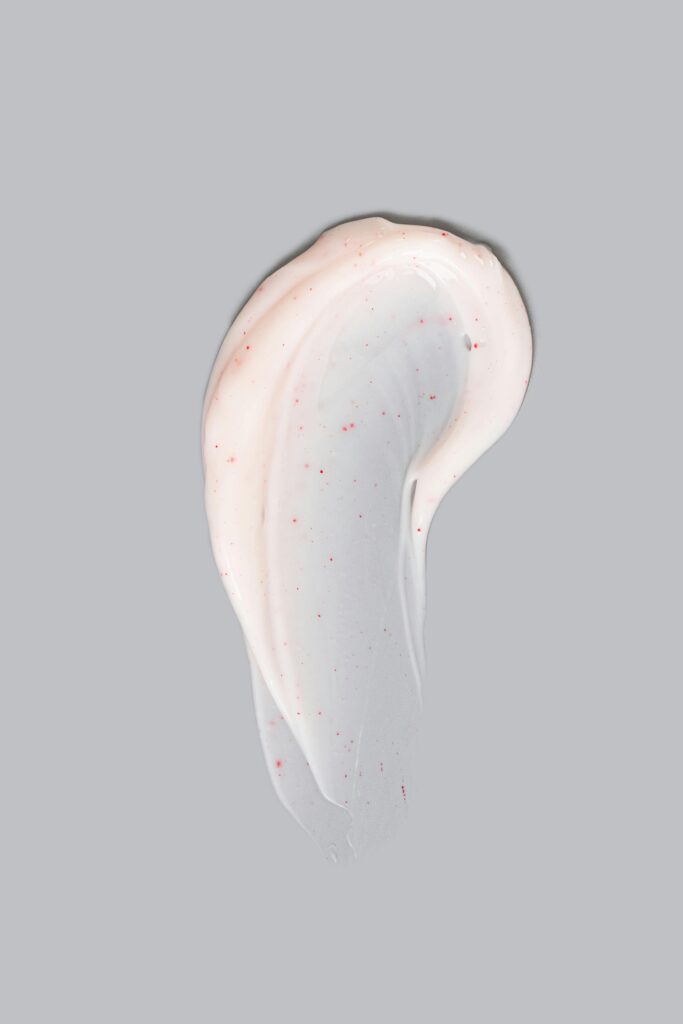The Hidden Gem of Skincare – Squalene
Imagine using a skincare ingredient that works just like your skin’s natural oils, keeping it hydrated, youthful, and protected from damage. Meet squalene, a naturally occurring lipid that plays a vital role in maintaining healthy skin.
As we age, our skin produces less squalene, leading to dryness, fine lines, and a weaker skin barrier (Pham et al., 2015). This is why the beauty industry has embraced squalene and its more stable form, squalane, in skincare products. But what exactly is squalene, and why is it so beneficial for your skin? Let’s break it down.
What is Squalene?
Definition & Structure
Squalene (C₃₀H₅₀) is a natural compound found in our skin’s oils. It was first discovered in shark liver oil by Masumaru Tsujimoto in 1916 (Shalu et al., 2024). Due to its six double bonds, it is highly reactive to oxygen, which makes it unstable. This is why most skincare products use squalane, a hydrogenated, more stable version.

Formulator’s insight – why squalane and not squalene?
Squalane is the hydrogenated form of squalene. By saturating its carbon bonds, the molecule becomes stable in air and resistant to oxidation. This single chemical change significantly improves its shelf life and makes it safer for topical use.
In formulations, squalane offers the same emollient and barrier-supportive benefits as squalene, but without the risk of degradation. Squalane’s stability makes it suitable for use across a broad range of cosmetic products, including serums, creams, and cleansing oils. In contrast, oxidized squalene can actually cause breakouts.
Where Does Squalene Come From?
Squalene is found in different sources, including animals, plants, and even microorganisms:
| Source | Squalene Content | Sustainability |
| Shark Liver Oil | 50-80% | Harmful to marine life, unsustainable (Shalu et al., 2024) |
| Olive Oil | 0.4-0.8% | Sustainable but low yield (Yarkent & Oncel, 2022) |
| Amaranth, Rice Bran, Sugarcane | 0.3-7% | More eco-friendly but limited supply (Huang et al., 2009) |
| Yeast & Algae Fermentation | High yield | Most sustainable option (Shalu et al., 2024) |

Due to ethical concerns about shark-derived squalene, the beauty industry is shifting towards plant-based and biotechnological sources. Yeast and microalgae fermentation is emerging as the most sustainable solution.
The Benefits of Squalene in Skincare
Squalene and squalane provide multiple skin benefits, backed by science. Here’s how they work:
1. Hydration Without the Greasy Feeling
Squalene is similar to the natural oils in our skin, so it absorbs quickly and locks in moisture without feeling heavy. Studies show that squalane helps maintain skin hydration and elasticity (Fiume et al., 2023).
2. A Powerful Antioxidant
Squalene neutralizes harmful free radicals from pollution and UV rays. However, because it oxidizes easily, using squalane instead ensures long-term antioxidant protection.
3. Strengthens the Skin Barrier
Squalene is a key part of sebum, helping to protect the skin from dehydration and environmental stress. It also reduces trans-epidermal water loss (TEWL), keeping the skin strong and resilient.
4. Soothes Sensitive Skin
Squalene has anti-inflammatory properties, helping to calm redness, irritation, and conditions like eczema and rosacea.
5. Safe for Acne-Prone Skin
Unlike heavy oils, squalane is lightweight and non-comedogenic, meaning it won’t clog pores. In contrast, oxidized squalene can actually cause breakouts.
| Benefit | How It Works | Scientific Support |
| Deep Hydration | Mimics natural skin lipids | Fiume et al. (2023) |
| Antioxidant Protection | Shields skin from free radicals | Pham et al. (2015) |
| Barrier Strengthening | Reduces moisture loss | Yarkent & Oncel (2022) |
| Calming Effect | Soothes redness and irritation | Huang et al. (2009) |
| Acne-Friendly | Lightweight and won’t clog pores | Fiume et al. (2023) |
The Future of Squalene: Sustainability Matters
Sustainable Alternatives
- Plant-Based Squalene: Extracted from olives, amaranth, and sugarcane—but supply is limited and can be affected by climate conditions.
- Microbial Fermentation: The most sustainable option, using yeast and algae to produce high amounts of squalene without harming the environment. New advances in genetic engineering and fermentation allow scientists to produce squalene efficiently and sustainably.

The Problem with Shark Squalene
Historically, sharks were the main source of squalene. However, 3-6 million sharks are killed each year for their liver oil. This practice is not only unethical but also disrupts marine ecosystems.
The Best Skincare Products with Squalene
Squalene and its stable form, squalane, are featured in many skincare products due to their hydrating, anti-aging, and protective properties. Understanding which formulations suit different skin types can help you maximize its benefits.
Types of Skincare Products with Squalene
Squalene is included in various skincare formulations, each designed to maximize its benefits:
- Cleansers – Effectively removes impurities while maintaining skin moisture, reducing oxidative stress caused by pollution (Pham et al., 2015).
- Serums – Penetrate deeply to deliver hydration and antioxidant protection, reducing fine lines over time.
- Moisturizers – Lock in hydration while strengthening the skin barrier and reducing transepidermal water loss (Yarkent & Oncel, 2022).
- Face Oils – Provide intense nourishment and repair for dry or aging skin.
- SPF & Makeup – Offer sun protection while preventing oxidative damage and enhancing skin elasticity.
Ideal Concentrations for Maximum Benefits
Research suggests that skincare products should contain 5-12% squalane to provide optimal hydration and antioxidant protection without feeling heavy (Fiume et al., 2023). High concentrations of pure squalane oils are particularly beneficial for deep hydration and restoring elasticity.

Fun Fact: Did you know that deep-sea sharks rely on squalene to maintain their buoyancy? Thankfully, modern biotechnology allows us to produce squalene without harming marine life (Shalu et al., 2024).
Who Should Use Squalene?
Squalene benefits all skin types, but certain groups may find it particularly transformative:
| Skin Type | Benefits of Squalene |
| Dry/Dehydrated | Deeply hydrates, prevents flakiness, and enhances lipid barrier function. |
| Oily/Acne-Prone | Balances sebum production and has a lightweight, non-comedogenic texture. |
| Sensitive/Reactive | Soothes irritation, reduces redness, and supports barrier repair. |
| Mature Skin | Reduces oxidative stress, improves elasticity, and supports collagen production. |
How to Incorporate Squalene into Your Routine
- Morning Routine: Apply a squalane serum before moisturizer for lightweight hydration and antioxidant defense.
- Evening Routine: Use a squalane face oil as the final step to nourish and restore skin overnight.
- Layering Tip: Squalane pairs well with vitamin C, hyaluronic acid, and ceramides to boost hydration and anti-aging effects.
As an advocate for science-backed and ethical beauty, I recommend using squalane derived from sustainable sources such as sugarcane or microalgae.
Why Squalene Deserves a Place in Your Routine
To sum it up, squalene is a great ingredient that hydrates, protects, and nourishes all skin types. With its sustainable production and clinically proven benefits, it’s an essential addition to any skincare regimen.
Key Takeaways:
- Hydrates without clogging pores – making it suitable for all skin types.
- Powerful antioxidant – protects against oxidative damage and supports long-term skin health.
- Sustainably produced – modern methods use plant-based and microbial sources, preserving marine life.
Have you tried squalane before? Share your experience in the comments!
Talk to you soon!
Dr Bozica
References
https://www.mdpi.com/1420-3049/14/1/540Was
https://link.springer.com/article/10.1007/s12257-021-0355-z
https://analyticalsciencejournals.onlinelibrary.wiley.com/doi/full/10.1002/elsc.202400003
https://onlinelibrary.wiley.com/doi/full/10.1111/ics.12208
https://journals.sagepub.com/doi/full/10.1177/10915818231204276
I feel that is one of the such a lot important information for me. And i’m happy reading your article. But wanna statement on few common things, The website taste is ideal, the articles is truly nice : D. Just right job, cheers
Thank you! 🙂